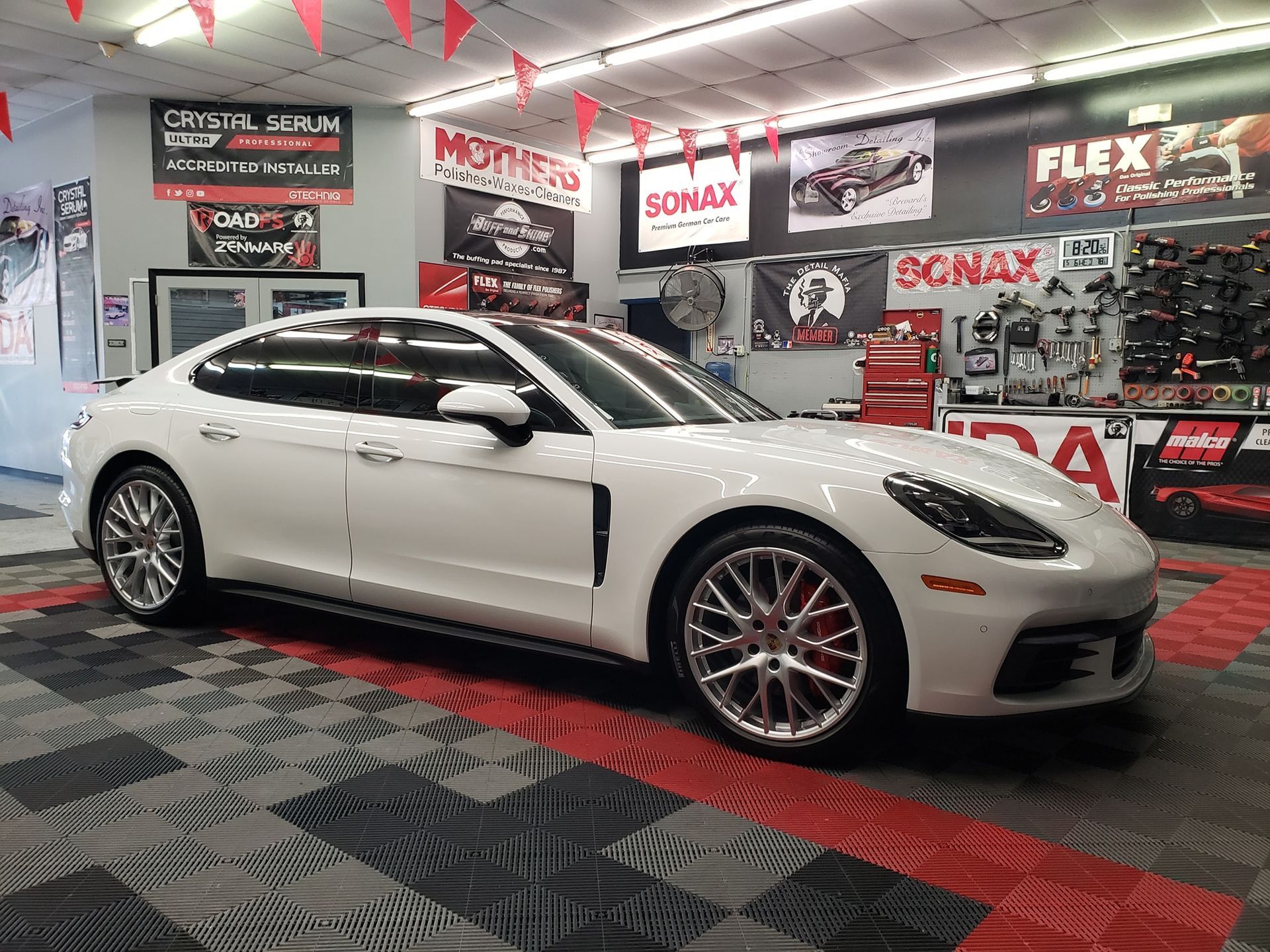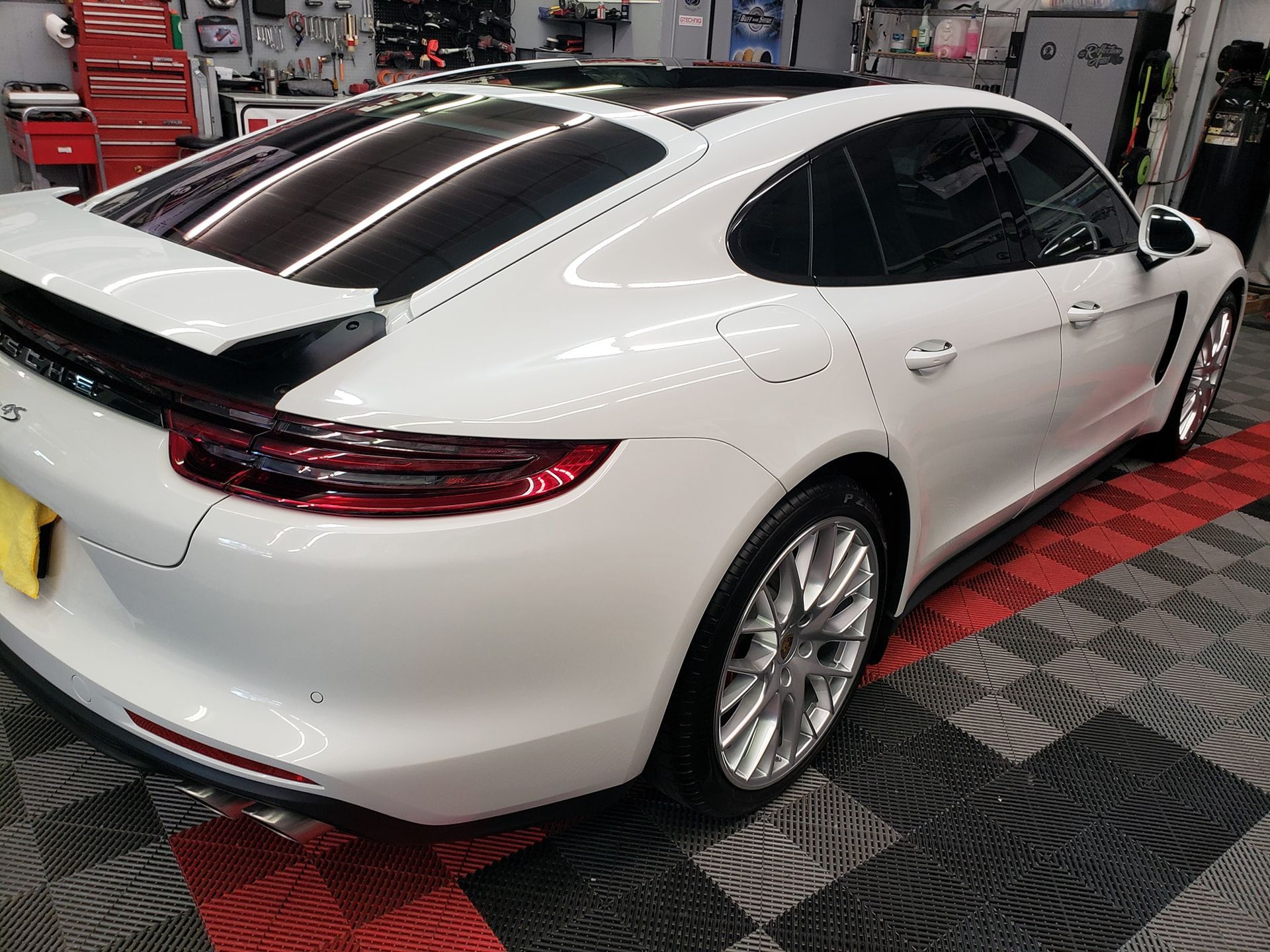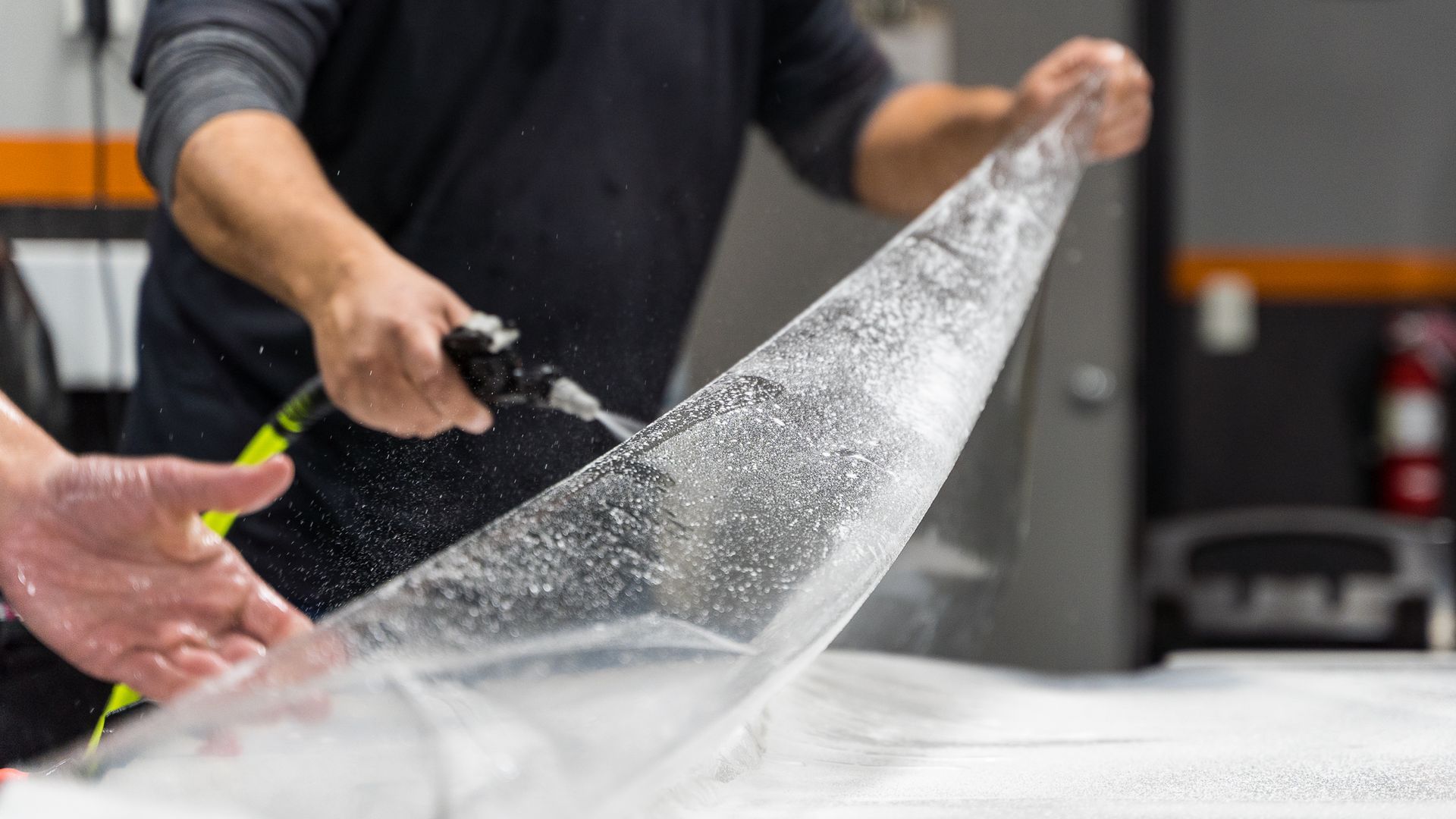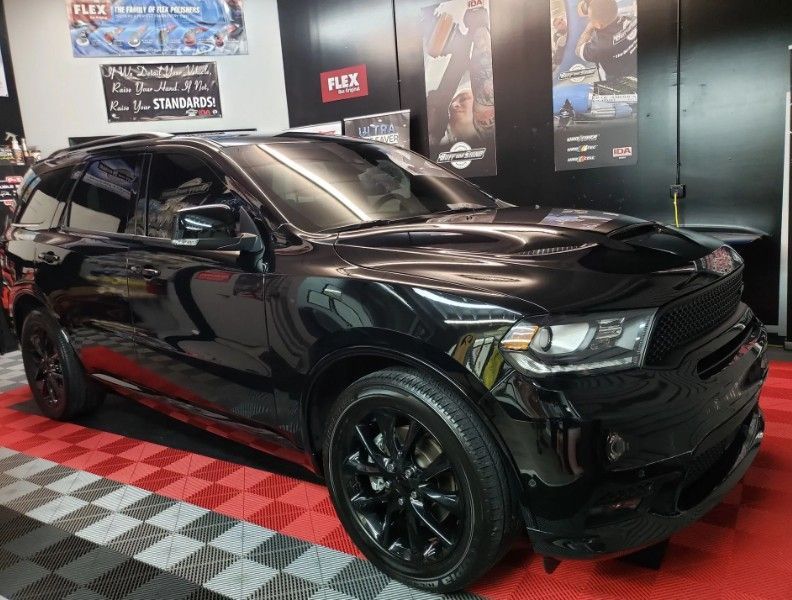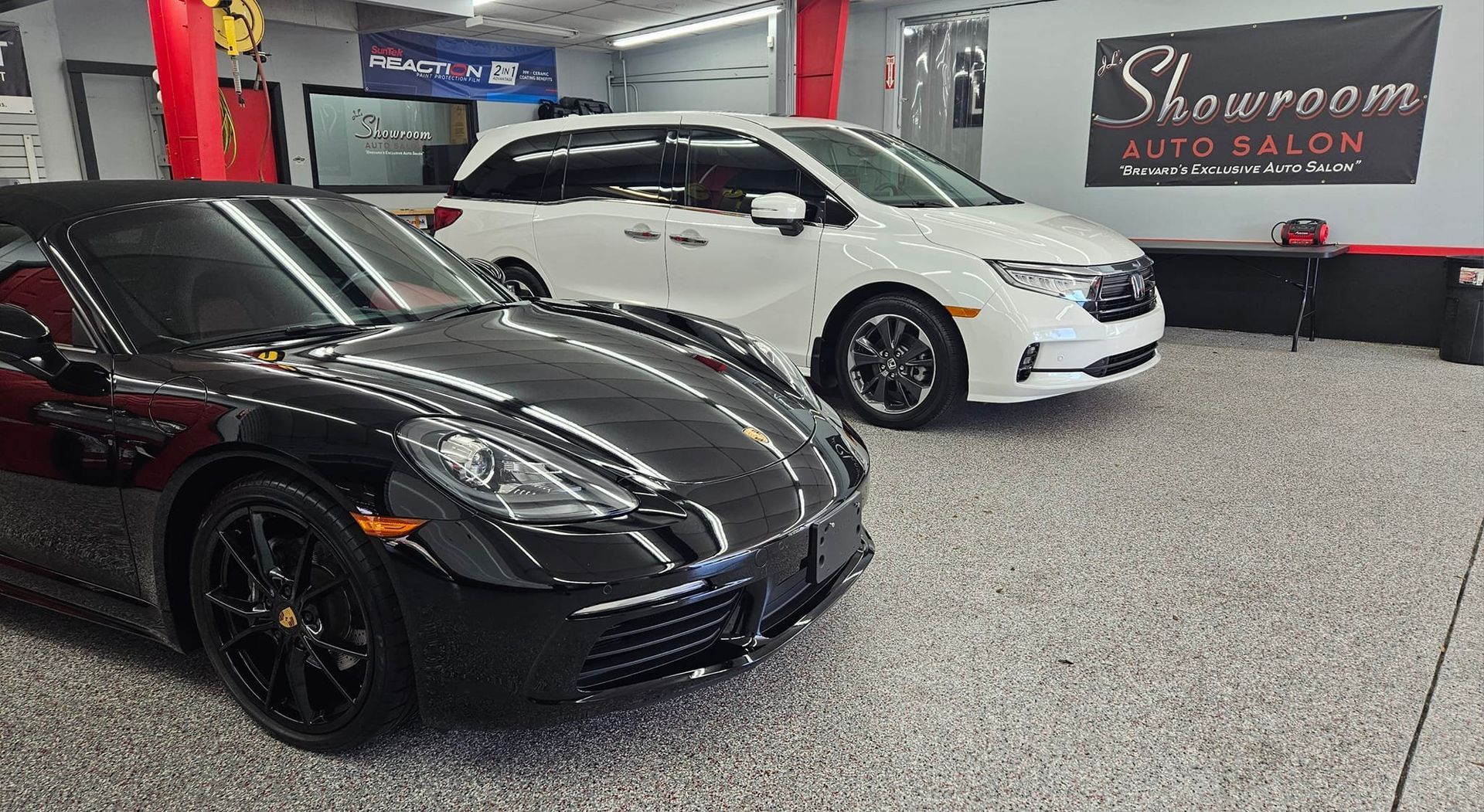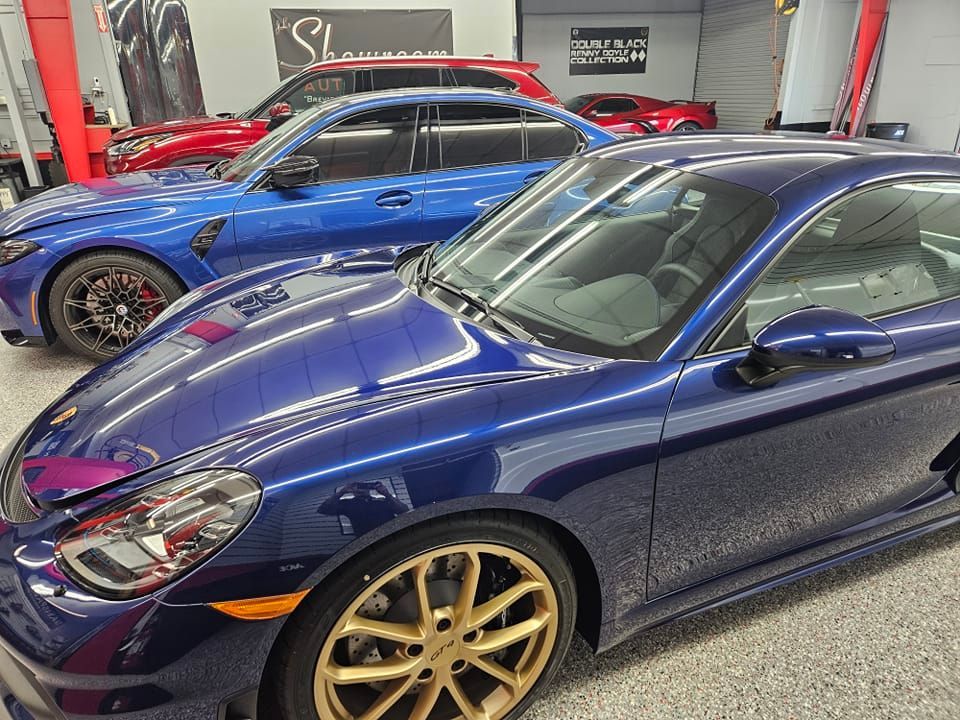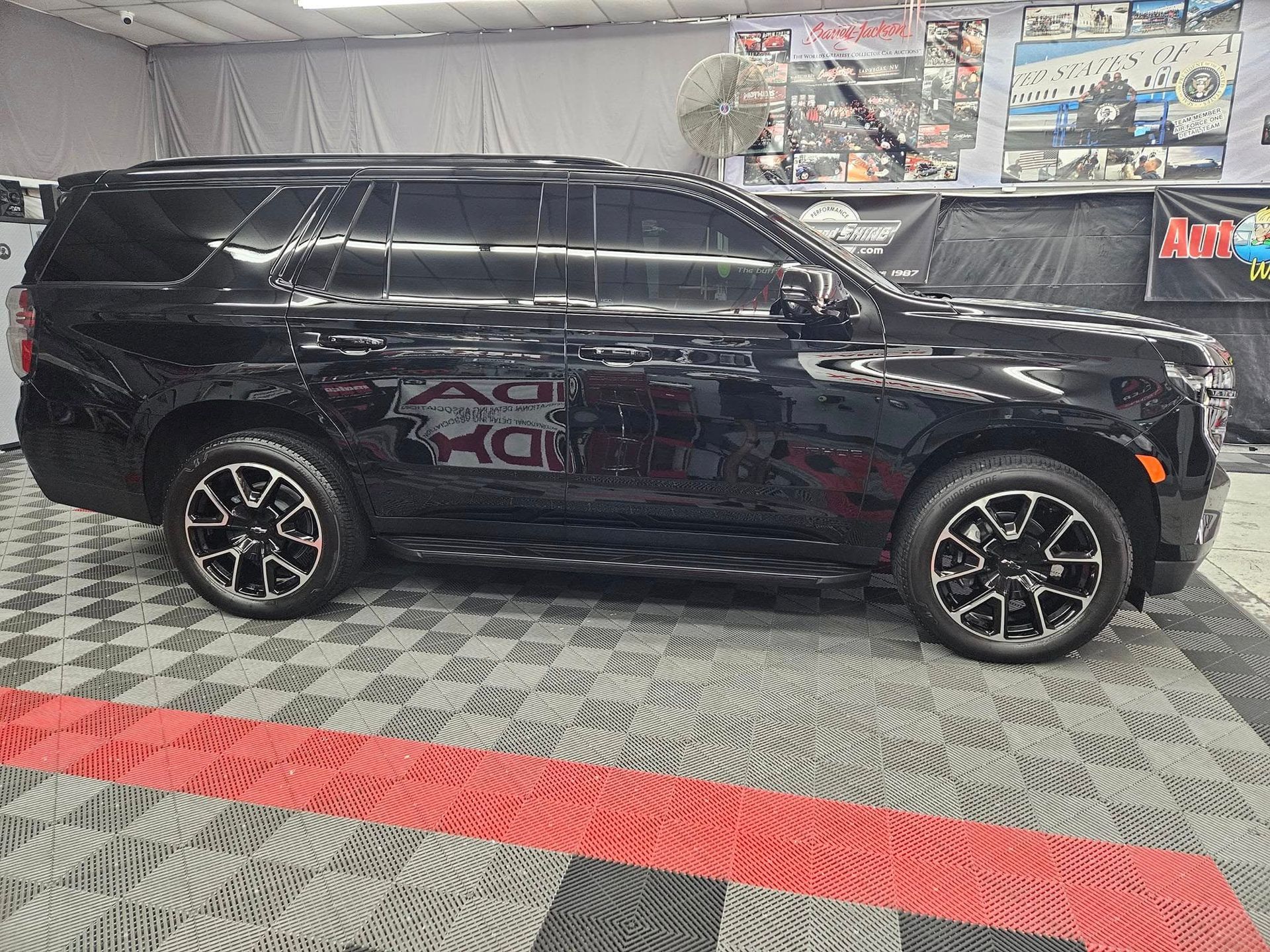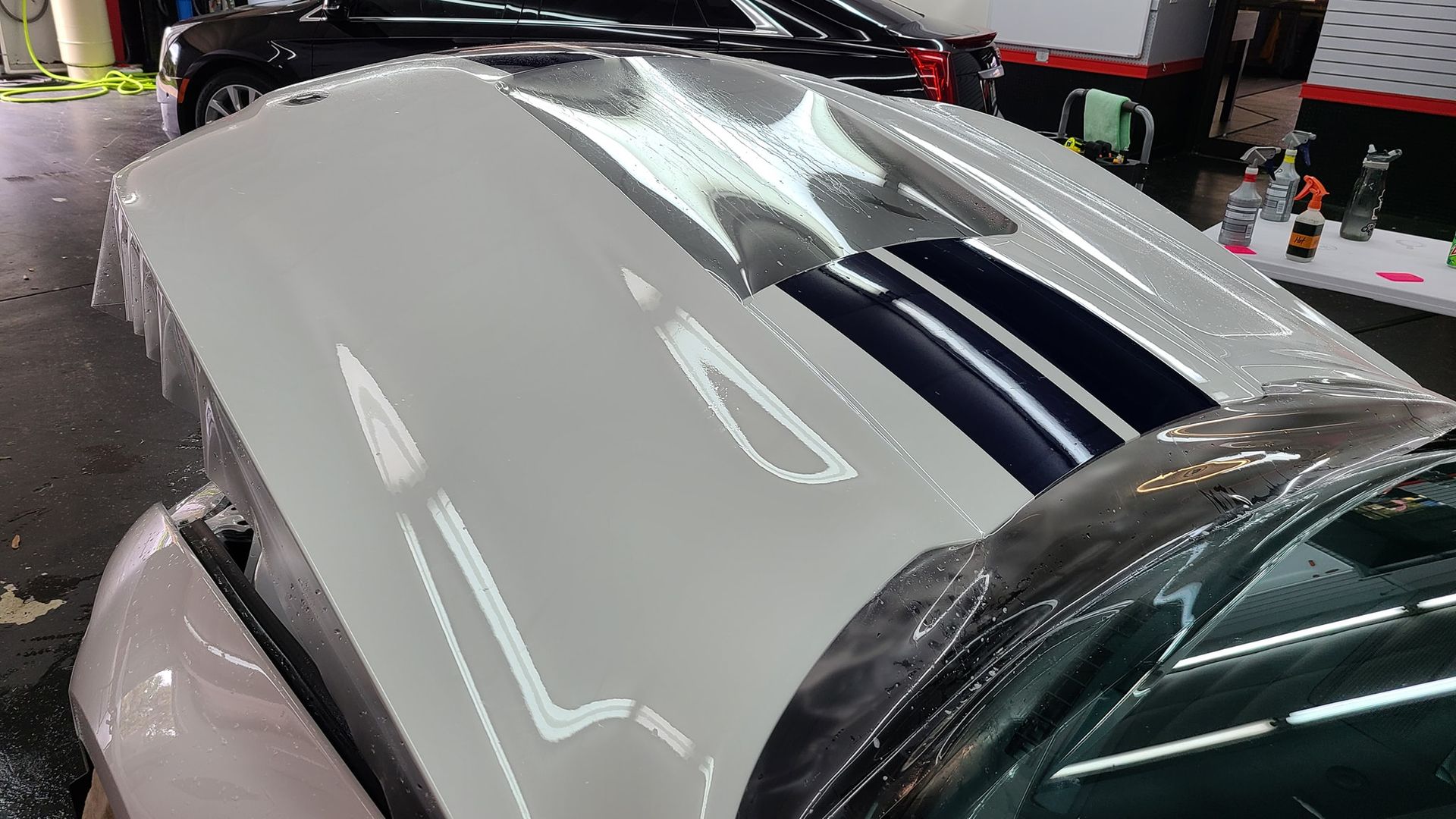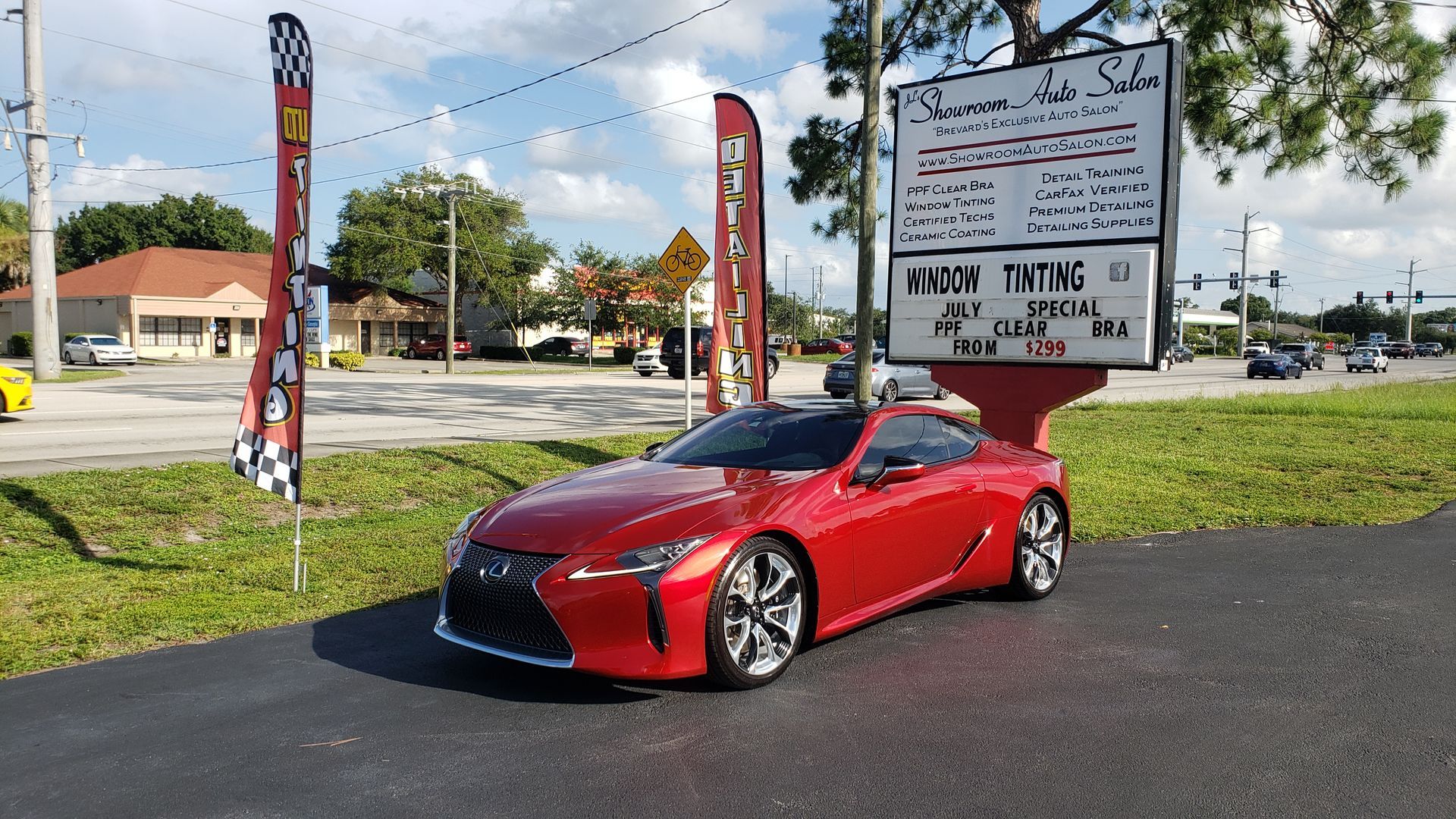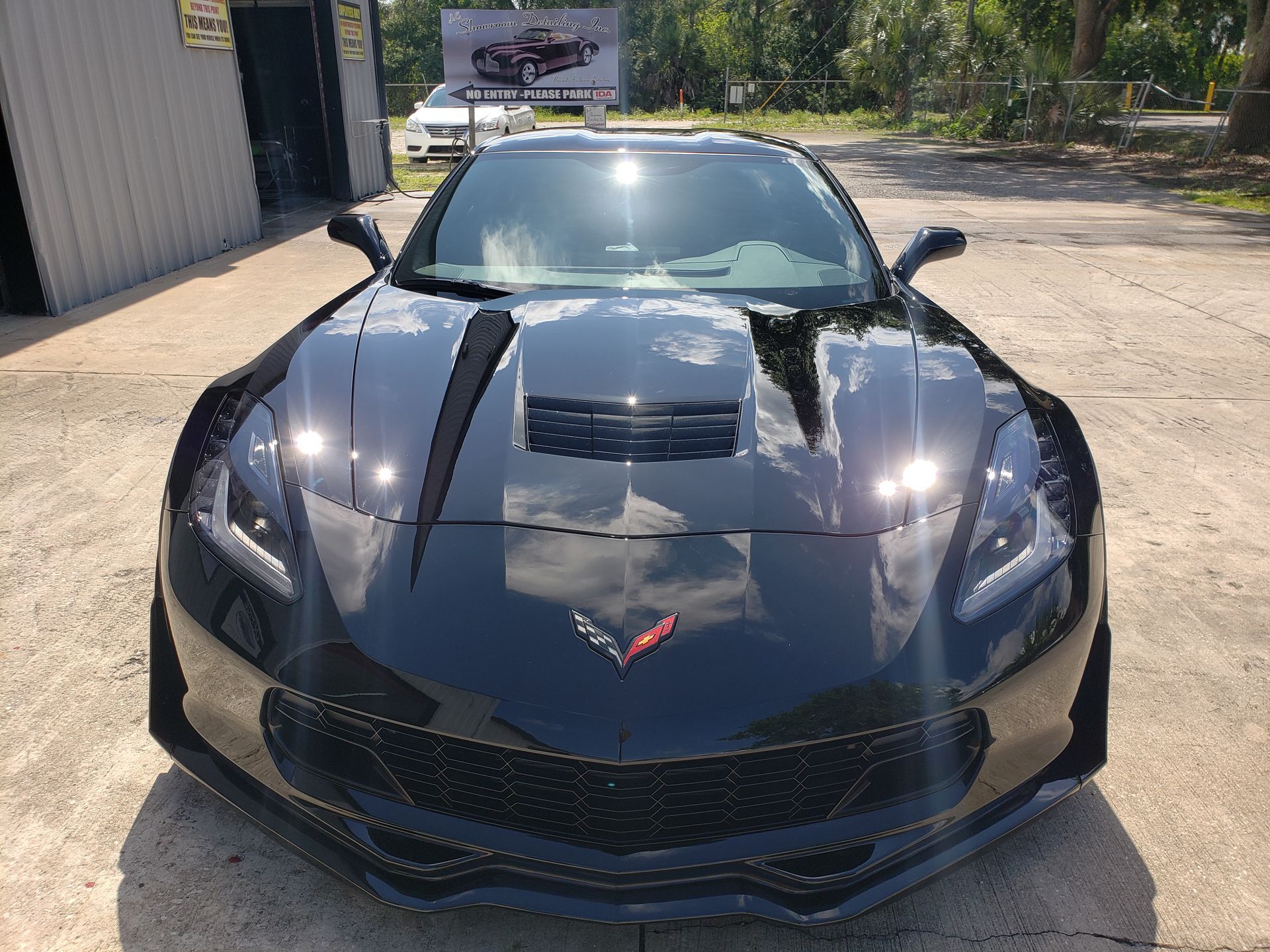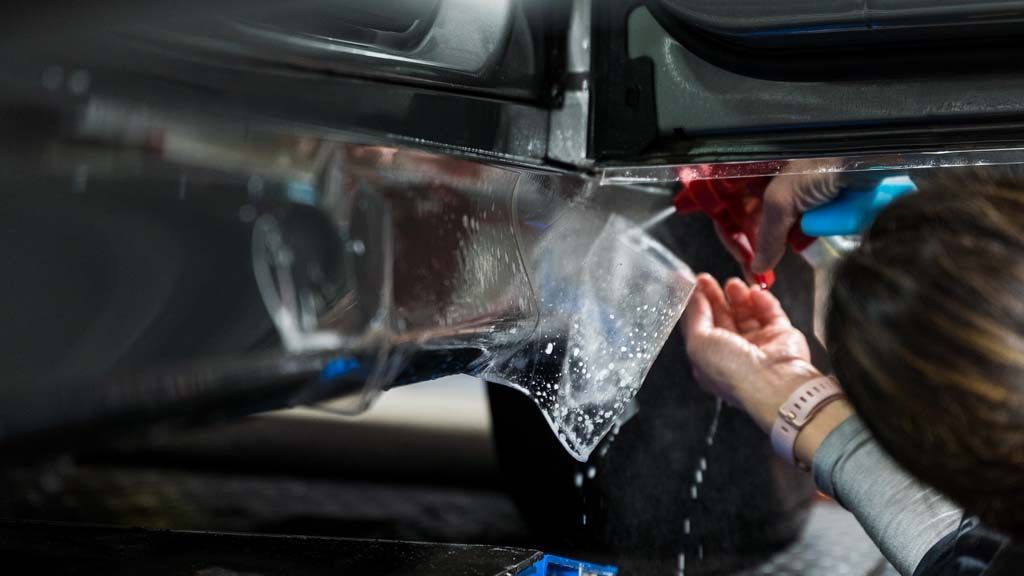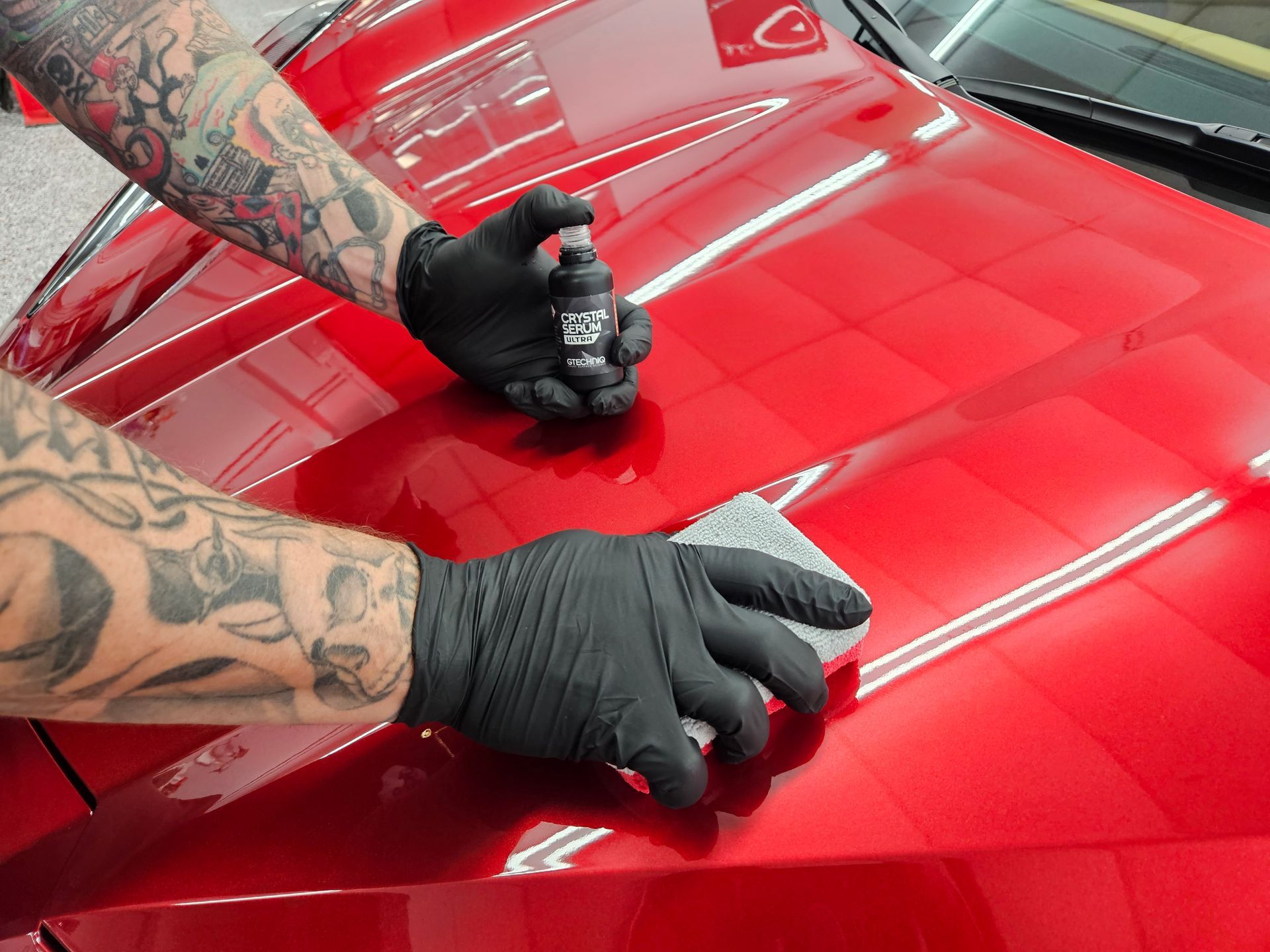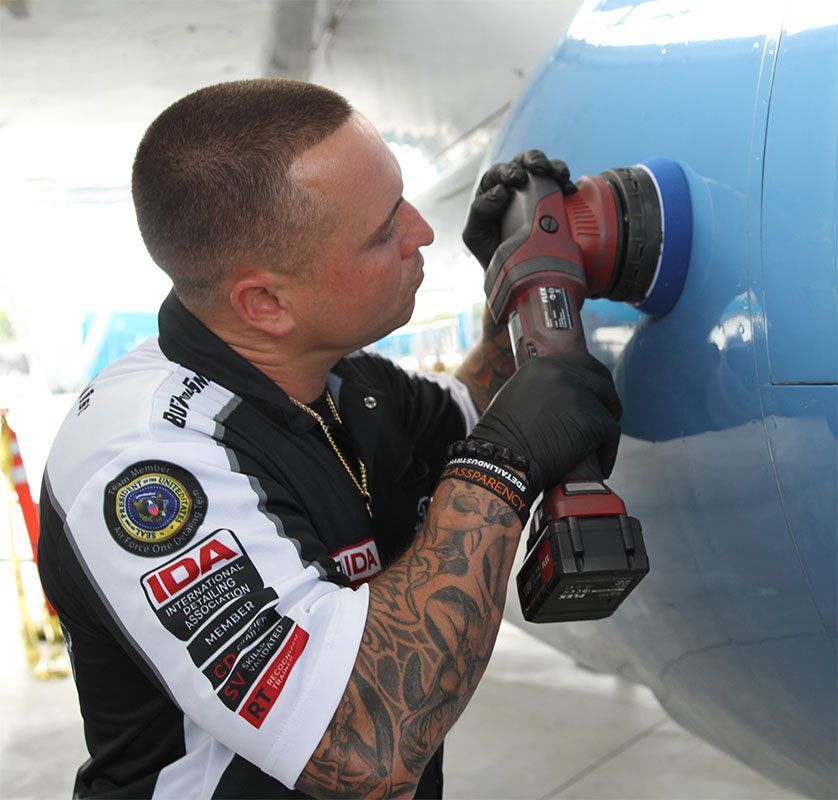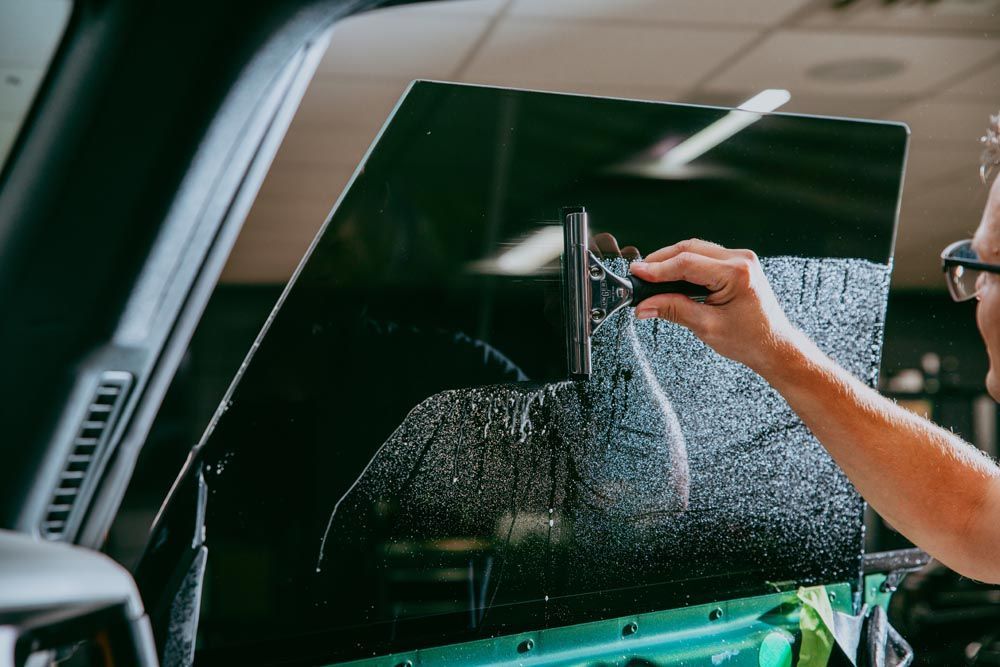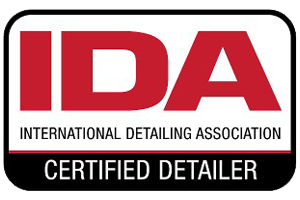The Ultimate Guide to Paint Protection Film: Guarding Against Chips, Scratches, and UV Damage
A paint protection film guard safeguards your car’s painted surfaces like no other. It shields against common sources of damage such as stone chips, minor scratches, bird droppings, and chemical stains. More so, it maintains your vehicle's original shine, even when faced with harsh UV rays. Now, as you consider outfitting your car with this protective layer, know that you're investing in long-lasting beauty for your vehicle.
To effectively protect your car's paint from chips, scratches, and UV damage, consider using a high-quality paint protection film. This thermoplastic urethane film acts as a protective barrier against environmental damage and minor abrasions, preserving the original look of your vehicle while enhancing protection. Additionally, it is recommended to apply a ceramic coating over the PPF for comprehensive protection, including enhanced UV resistance and hydrophobic properties.
Purpose and Advantages of Paint Protection Film
Picture this: you're cruising down a scenic highway, the sun setting on the horizon. As the cool breeze hits your face, small pebbles propelled by passing vehicles hit your car's front end. Simultaneously, the car behind yours kicks up dust and grit. This is where paint protection film becomes your unsung hero. The primary function of paint protection film is to act as a guardian shield for your car's painted surface. It stands between your vehicle and environmental aggressors such as road debris, bird droppings, tree sap, insect splatters, and even chemical stains. PPF serves as a barrier against these elements, preserving the factory finish of your car. Without it, these hazards could mar the paint job and leave unsightly blemishes.
Some PPFs come with an outstanding feature—self-healing properties. This means that when minor scratches or swirling marks appear on the film, all it takes is a little heat (like warm water or sunlight) for these imperfections to magically vanish. Think of PPF as a safeguard for your car's paint. By acting as a sacrificial layer on top of the paint job, PPF extends the life of the vehicle’s exterior aesthetics. It safeguards against wear and tear caused by daily driving and environmental factors, maintaining that pristine appearance for longer than you can imagine.
Protecting Your Vehicle from UV and Scratch Damage
It's a sunny day, and you're out for a drive, relishing the pleasant weather. But did you know that the sun's harmful ultraviolet (UV) rays can gradually fade your car's paint over time? Just like sunscreen protects our skin from the sun's damaging effects, paint protection film shields your car's vibrant coat from the detrimental impact of UV rays.
The sun's powerful UV rays can cause more damage than we might think. It may cause dullness and oxidation. PPF acts as a robust barrier against these effects, preserving your car's original, vibrant appearance year after year. Moreover, PPF excels at blocking out harmful UV rays, preventing accelerated fading and color changes on your vehicle's exterior, thereby maintaining its aesthetic appeal. By acting as a shield against the sun's rays, PPF ensures that your car looks as stunning as it did on day one, even after years of exposure to harsh sunlight.
Shielding Against Scratches
When it comes to keeping your car looking pristine, scratches and stone chips are arch nemeses. Even minor abrasions can detract from your vehicle's visual allure. This is where PPF truly shines. Acting as an impervious barrier, it absorbs scratches and stone chips that would otherwise mar the flawless finish of your car's original paint. For instance, PPF offers unparalleled protection against common sources of scratches and abrasions encountered during regular driving. This enables you to enjoy peace of mind, knowing that your vehicle is shielded from everyday wear and tear that would otherwise compromise its impeccable exterior.
In particular, while they may not be immediately visible, minor abrasions can accumulate over time and diminish the resale value of your vehicle. PPF acts as an invisible shield against this gradual erosion, ensuring that your investment retains its allure and value for years to come. By comprehensively safeguarding your vehicle from the detrimental effects of UV radiation and scratches, paint protection film not only preserves its pristine appearance but also safeguards its long-term value. With PPF in place, you can confidently navigate any road without fretting about potential damage compromising your car's aesthetic appeal or market worth.
Choosing the Most Suitable Film Guard for Your Car
When it comes to protecting your car, several factors require consideration before opting for a paint protection film. The film you choose should be tailored to your driving habits and the specific needs of your vehicle. Here's how you can ensure you make the right choice:.
Consider your driving habits. Choosing the most suitable film guard for your car starts with closely examining your driving habits. Are you someone who frequently embarks on long drives on highways or navigates rough and challenging terrain? If so, it's crucial to opt for a thicker and more durable film that offers optimal protection against debris and road hazards. A PPF with a higher thickness rating provides enhanced resistance against rocks, gravel, and other projectiles that could damage your car's paint. On the flip side, if you primarily drive in urban areas with minimal exposure to debris, a standard-thickness PPF may suffice. By aligning the level of protection with your driving environment and habits, you can ensure that your vehicle receives the appropriate shield without overspending on unnecessary features.
Consult with professionals. Seeking advice from professional PPF installers or car detailing experts can provide valuable insights into choosing the most suitable film for your specific needs. These professionals have extensive experience working with diverse car models and understanding the varying environmental conditions that vehicles are exposed to. Their expertise allows them to recommend the most appropriate paint protection film based on your car model, driving conditions, and desired level of protection. Moreover, consulting these professionals can help in identifying any unique characteristics of your vehicle that may influence the selection of a compatible PPF. Whether it's a specific curvature in the design or areas prone to impact, their guidance can ensure that you make an informed decision that safeguards your car effectively.
Approximation of Paint Protection Film Guard Expense
The cost of installing paint protection film (PPF) can vary significantly depending on a range of factors. One of the primary determinants of the expense is the size and coverage area of the film applied to the vehicle. Full-body PPF installations are naturally more expensive than partial ones. Simply put, the larger the surface area to cover, the more material and time it takes to install the protective film. For instance, a full vehicle package typically covers all exterior painted surfaces of the car. The expansive coverage provides comprehensive protection but also commands a higher price due to the increased material and labor required during installation.
Factors Affecting PPF Installation Cost
Several other factors contribute to the varying costs of PPF installation:
- Quality of Film: The type and quality of the film used play a significant role in determining the total expense. Higher-end PPF, often boasting self-healing properties and superior UV resistance, tends to be more costly. However, these advanced films provide greater protection and longevity, making them worthwhile investments in the long run.
- Overhead Costs: The overhead costs of the auto shop where you choose to have the PPF installed can impact the overall price.
- Vehicle Design Complexity: Uniqueness or complexity in a vehicle's design or features may increase the cost of PPF installation.
- Experience of the Installer: The experience and expertise of the installer also influence the cost.
- Vehicle Age and Condition: The age of the vehicle can impact installation costs.
- Existing PPF Removal: If your vehicle already has an existing PPF that needs to be removed before new installation, this additional step will incur extra costs due to residue cleaning and preparation for new film placement.
It's important to note that while these factors contribute to variations in price, they also offer opportunities for customization based on specific needs and budget constraints. If you're looking for a more basic protective solution, there are options available that align with your financial parameters without compromising on essential guarding attributes. With these considerations in mind, it's advisable to seek out reputable installers who can assess your vehicle's requirements and provide tailored recommendations according to your preferences and budget.
Lifespan and Maintenance of the Paint Protection Film Guard
One of the most attractive aspects of paint protection film (PPF) is its durability. When properly maintained, these films can serve as a long-term solution for safeguarding your vehicle's exterior. With proper maintenance, PPFs typically last between 3-5 years or even longer, providing extended protection against chips, scratches, and UV damage.
Regular washing with automotive soap is essential to keep the film clean without compromising its protective properties. It's crucial to avoid high-pressure washes, as they can damage the film. Similarly, harsh chemicals or abrasive polishes should be avoided, as they can degrade the integrity of the PPF. These simple maintenance practices ensure that the film continues to provide optimal protection for your vehicle's paintwork. Additionally, performing routine checks for any signs of damage is essential for early intervention if needed. By inspecting the film for scratches, peeling, or discoloration, you can address potential issues before they escalate, thereby preserving the effectiveness of the PPF.
It's important to note that while PPF significantly extends the lifespan of your vehicle's paint job, it does require careful attention to ensure its longevity and effectiveness. By integrating these maintenance practices into your regular car care routine, you're essentially investing in the long-term preservation of your vehicle's appearance and value.
Trusted Paint Protection Film Service in Melbourne
Revolutionize your vehicle's defense with JL's Showroom Auto Salon, your trusted provider of
paint protection film services in Melbourne, FL. Our commitment to preserving your car's pristine exterior goes beyond the ordinary; we specialize in applying top-tier PPF to shield your investment from rock chips, road debris, and the elements. Entrust your vehicle to our skilled technicians, who meticulously install this transparent armor, seamlessly enhancing its resilience without compromising aesthetics. Discover the peace of mind that comes with the highest level of paint protection available in Melbourne. Invest wisely in the longevity and beauty of your automobile by choosing JL's Showroom Auto Salon as your go-to PPF expert. Schedule your appointment now and experience the assurance that comes with our unparalleled commitment to excellence!
